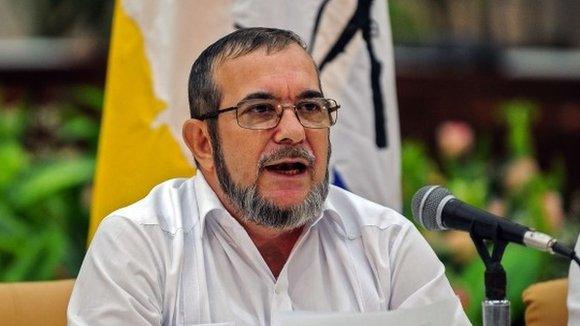Who are the Farc?
- Published

The Farc have been fighting one of the longest-running insurgencies in the world
Following the signing of a revised peace agreement between Colombia's largest rebel group, the Revolutionary Armed Forces of Colombia (Farc), and the Colombian government, BBC News takes a closer look at the guerrilla group which has been fighting the longest-running armed insurgency in the Western Hemisphere.

Who are the Farc?
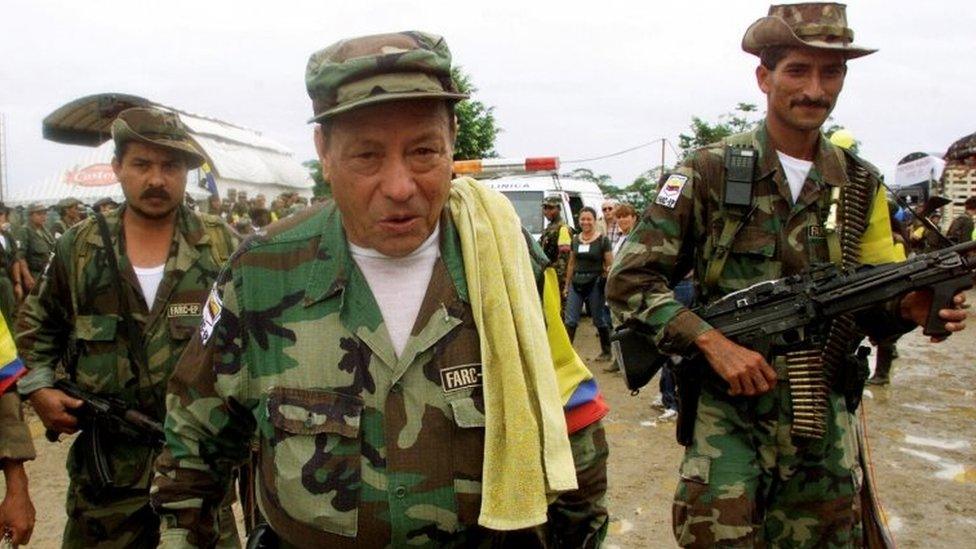
Manuel "Sureshot" Marulanda (centre) was the main leader of the Farc until his death in 2008
The Revolutionary Armed Forces of Colombia (Farc, after the initials in Spanish) are Colombia's largest rebel group.
They were founded in 1964 as the armed wing of the Communist Party and follow a Marxist-Leninist ideology.
Their main founders were small farmers and land workers who had banded together to fight against the staggering levels of inequality in Colombia at the time.
While the Farc have some urban groups, they have always been an overwhelmingly rural guerrilla organisation.

How many Farc fighters are there?
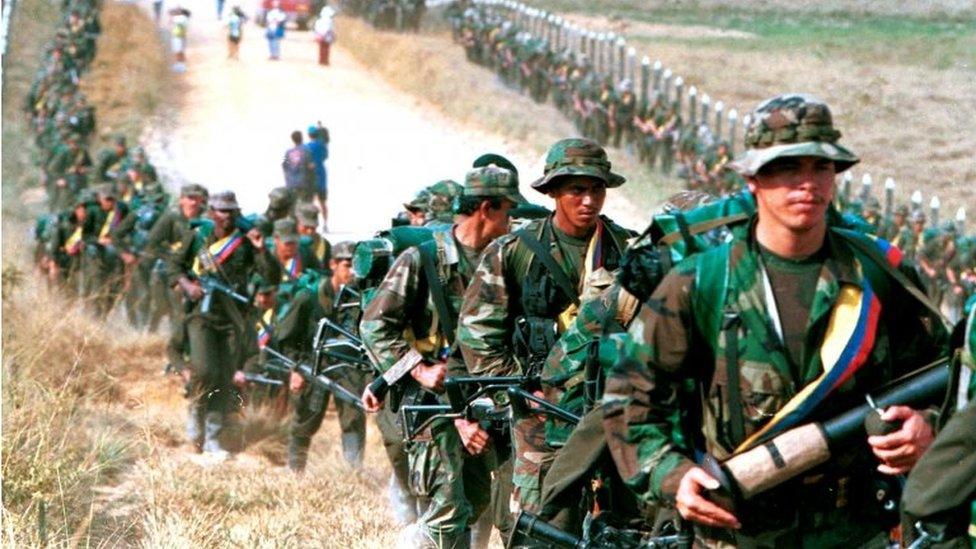
At their height, the Farc was estimated to have some 20,000 active fighters
The security forces estimate that there are between 6,000 and 7,000 active fighters within the ranks of the Farc.
They think there are another 8,500 civilians who make up the Farc's support network.
This is down considerably from the estimated 20,000 active fighters they are believed to have had around 2002.

How are they organised?
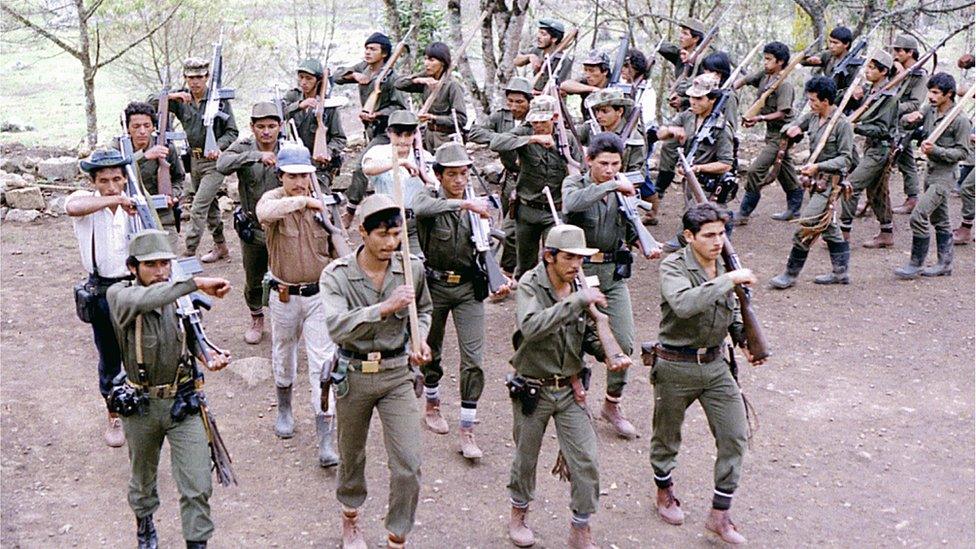
Most of the members of the Farc come from rural areas of Colombia
The rebels are organised in small tactical groups that in turn make up larger fighting units which are organised in regional "blocs".
They are controlled by the Secretariat, a group of less than a dozen top commanders who devise the overarching strategy of the Farc.
The Farc's top leader is Rodrigo Londono Echeverri, better know by his alias Timochenko.

Why did they take up arms?
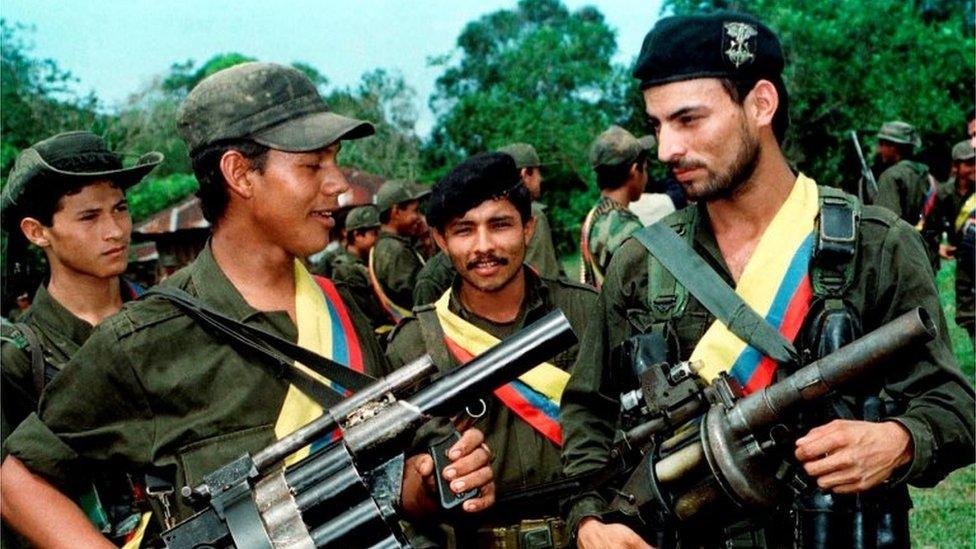
While they were not very well armed when they were first founded, the Farc have acquired some heavy weapons over the decades
The Farc were founded at a time of brutal repression against any form of action considered subversive.
Colombia has historically been a country which suffers from huge levels of inequality, where vast swathes of land are owned by a very small elite.
This is partly due to the fact that the Colombian state sold off large tracts of land to private owners in the late 19th and early 20th Centuries to pay for its debts.
Some of the founders of the Farc had established an agricultural commune in the region of Marquetalia, in central Tolima province.
Inspired by the Cuban revolution in the 1950s, they demanded more rights and control over the land.
But their communist ideals were seen as a threat by big landowners and the state, which sent in the army to disband the commune, or Marquetalia Republic as it had come to be known.
The Farc say that it was after the clashes with the army in Marquetalia that they decided to make their struggle an armed one.

Was Colombia peaceful before the Farc?
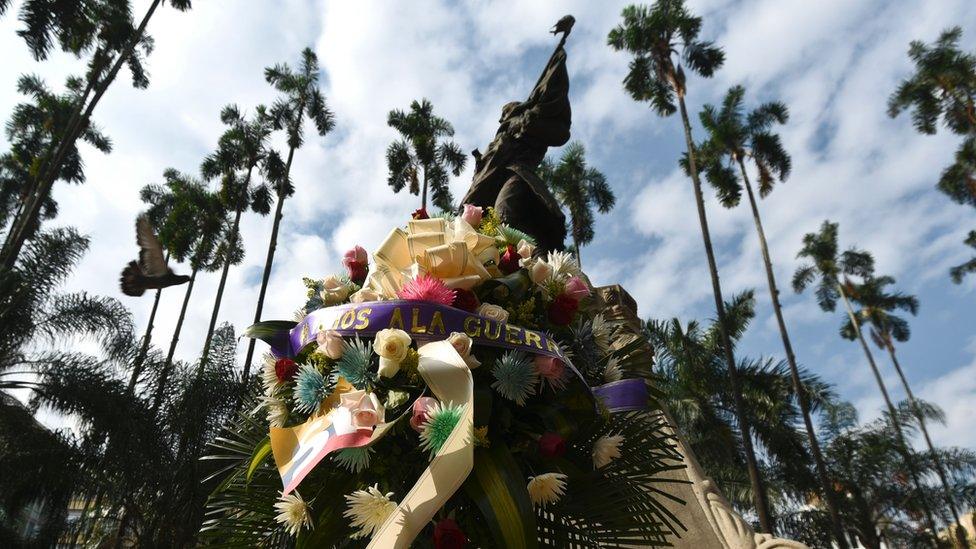
Colombia had suffered from decades of violence even before the Farc were founded
No, Colombia went through a 10-year civil war before the Farc were even founded.
During the period known simply as La Violencia (The Violence), between 200,000 and 300,000 people are estimated to have been killed.
La Violencia was triggered by the assassination in 1948 of Jorge Eliecer Gaitan, a popular presidential candidate for the Liberal Party.
His shooting in Bogota caused riots in the capital, which were followed by 10 years of conflict pitting the followers of the Liberal Party against those of the Conservative Party.
The man who would later become the top leader of the Farc, Manuel "Sureshot" Marulanda, had fought in La Violencia.

Who joined the Farc?
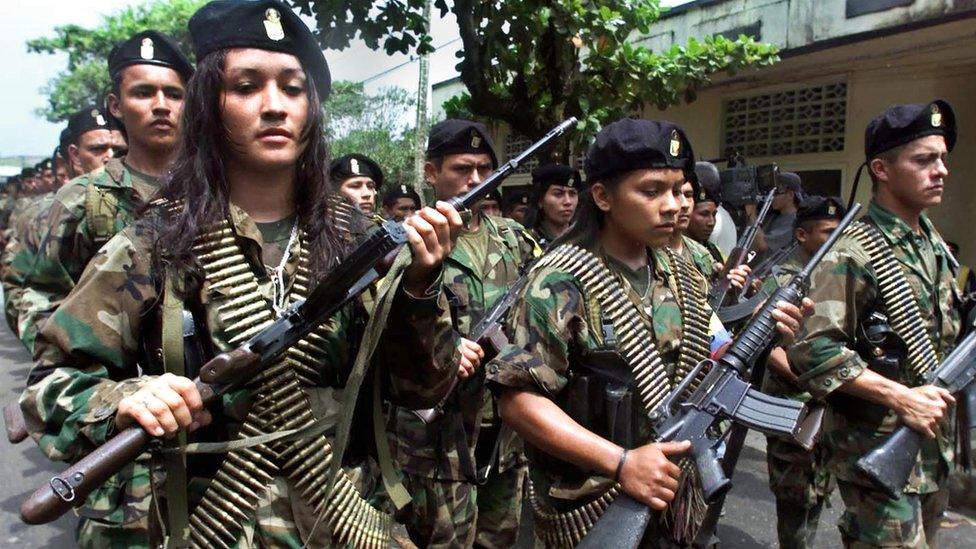
The Farc recruits women as well as men and have fighters of all ages, including children
Human rights groups have often accused the Farc of forcibly recruiting poor farmers and children. The Farc say that everyone who joined them did so voluntarily.
According to their own figures, there were 21 children under the age of 15 in their ranks in May 2016.
Most of their fighters are from poor, rural communities and include both men and women of all ages.
Some of those who have left the Farc speak of being lured by the promise of adventure and the kudos of carrying a gun.

Who do they fight?
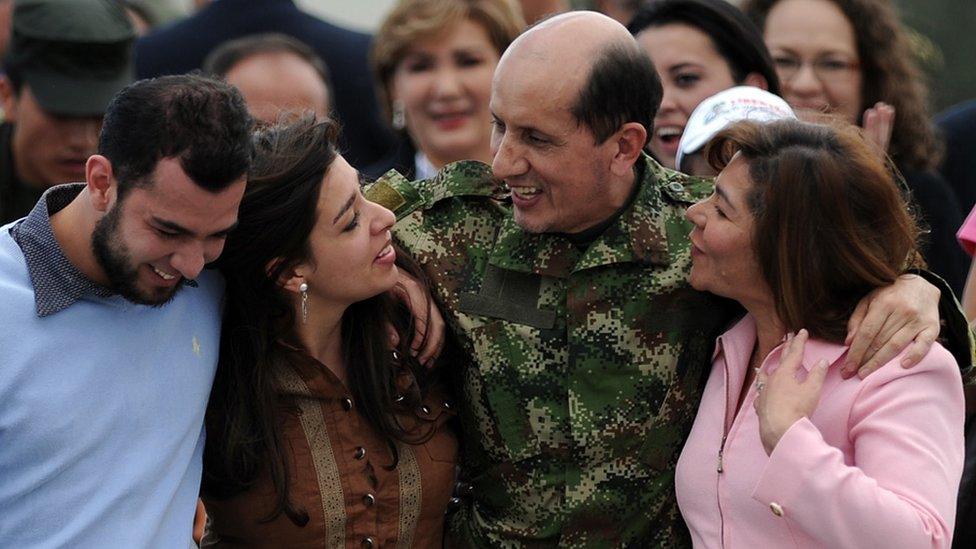
General Luis Mendieta (in uniform) was held captive by the Farc for 14 years
The main enemy of the Farc have been the Colombian security forces. Farc fighters have attacked police stations and military posts, and ambushed patrols.
But they have also blown up oil pipelines, electricity pylons and bridges and bombed social clubs.
Many of their victims have been civilians. They have included children who died when home-made Farc explosives fell short of a rural police station and hit a school, and thousands of people maimed by landmines laid by the Farc.
Thousands of people were kidnapped by the Farc for ransom.
One police officer, Luis Mendieta, was seized in an attack on a police station in 1998 and held for 14 years before being freed by the army in a rescue operation dubbed Chameleon.

How do they finance themselves?

The Farc run their own cocaine labs, such as this one which was raided by the army
Analysts think the Farc are among the richest rebel movements in the world.
Guerrilla commanders have denied the group has stashed away large sums of money
Colombia is one of the main producers of cocaine and the rebels get a large part of their income from drug trafficking or levying "taxes" on those who do.
They have also resorted to extortion and kidnapping for ransom to fill their coffers.

Why did they join the peace process?
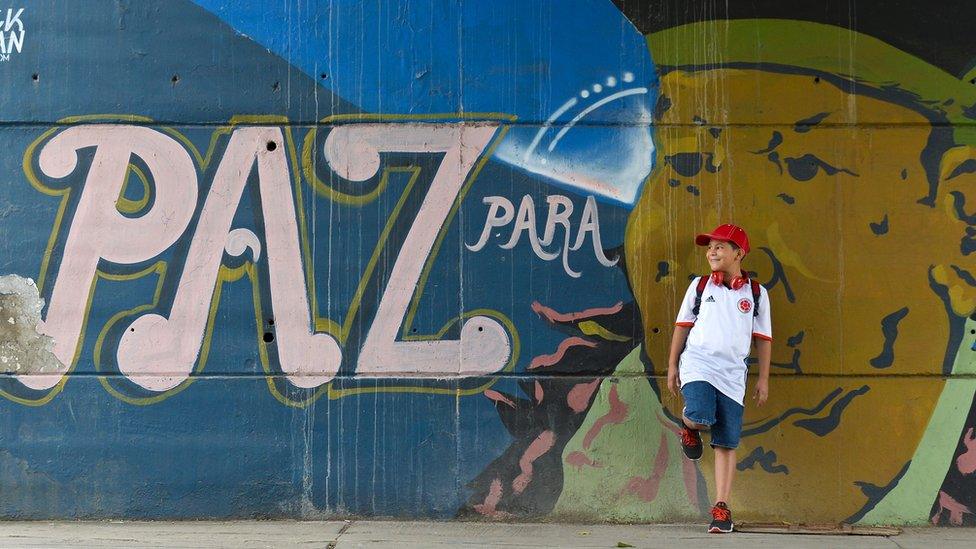
Previous attempts at reaching a peace deal failed but there is hope this latest deal will be signed soon
The Farc have been hit hard by the Colombian security forces over the past years.
The Colombian army and police received millions of dollars in funding and training from the US government, much of which they invested in fighting the rebels.
Many of the top leaders of the Farc were killed or died within the past decade.
In 2008, senior rebel leader Raul Reyes was killed in a bombing raid and Farc founder Manuel Marulanda died of natural causes.
In 2011, Alfonso Cano, who took over from Manuel Marulanda, was also killed in a bombing raid.
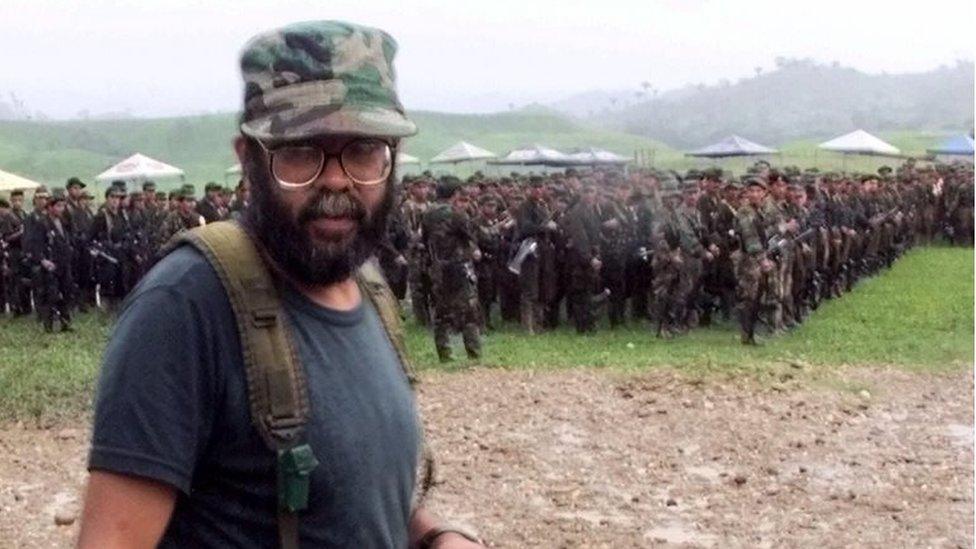
Farc leader Alfonso Cano was killed in a bombing raid in 2011
The number of active fighters also diminished from its estimated high of 20,000 to around 7,000 after thousands of guerrilla fighters were demobilised or killed.
The Farc themselves insist that they wanted peace all along but that the conditions were not right before.
- Published23 June 2016
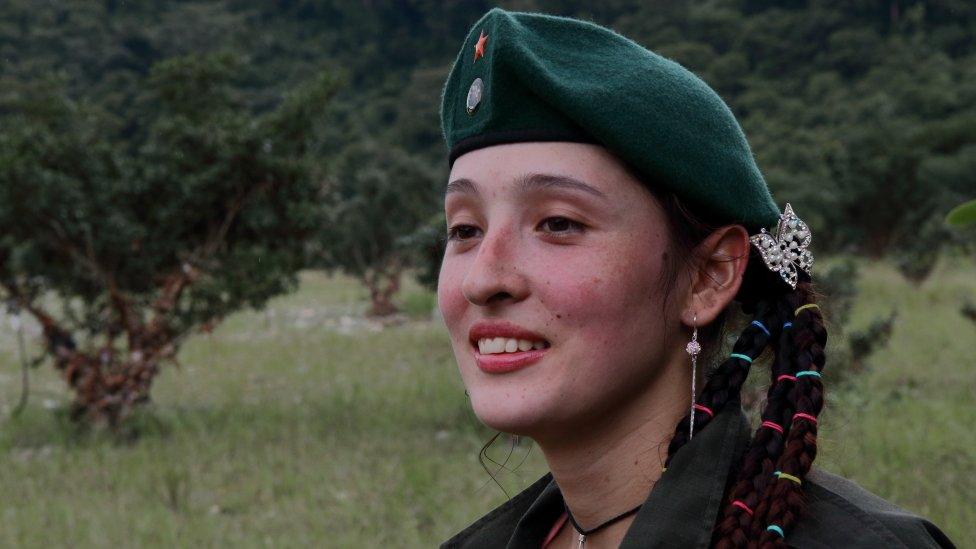
- Published5 April 2016
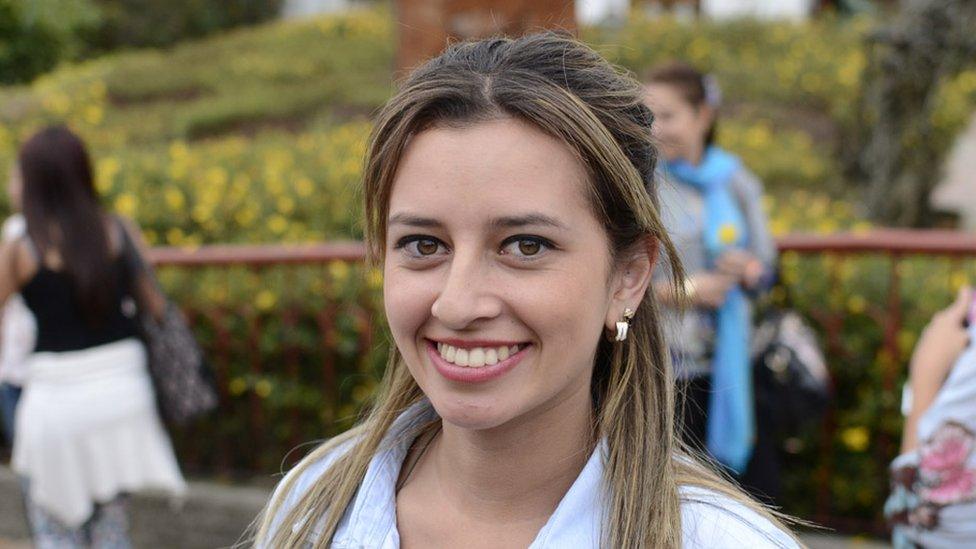
- Published24 September 2015
